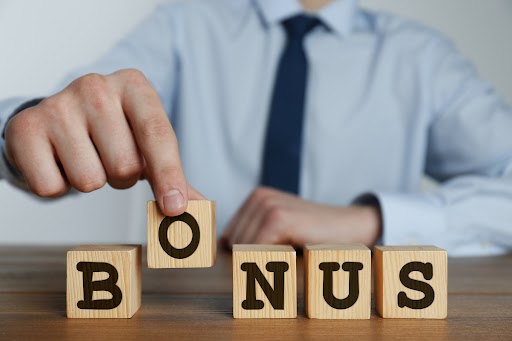In today's fast-paced business world, employee motivation and job satisfaction have become paramount. A motivated workforce ensures a positive work environment and significantly contributes to a company's success.
One of the most effective ways to keep employees engaged and motivated is through employee rewards and recognition. When employees feel valued and appreciated, they tend to go the extra mile, leading to increased productivity and better job performance.
In this blog post, we will explore different creative ways to reward employees and discuss how such rewards and recognition programs can enhance workplace productivity.
Let's dive deeper into each of the 12 employee reward and recognition ideas with examples and explore how they contribute to boosting workplace productivity:
1. Organize Themed Team Lunch
Themed team lunches allow employees to relax, bond, and take a break from daily tasks. Sharing a meal in a fun and creative setting fosters camaraderie and teamwork, which can translate into better collaboration and problem-solving attitudes at the workplace.
2. Present a Certificate of Achievement
Certificates of achievement serve as tangible reminders of an employee's hard work and dedication. Hosting employee recognition programs to provide certificates of achievement is a must-do activity.
It helps to showcase individual accomplishments, reinforcing a sense of pride and motivating the recipient to continue striving for excellence.
3. Offer a Work-From-Home Day
Granting a work-from-home day recognizes the importance of work-life balance. It allows employees to recharge, reduce commute-related stress, and work comfortably, increasing focus and productivity. A hybrid setup attracts talent more as it shows you value employees more.
4. Provide a Breakfast Treat
A surprise breakfast treat is a small gesture that can have a big impact. It starts the workday positively, fostering appreciation and setting a cheerful tone for the entire team.
Even cupcakes or sandwiches can light up the mood as it show the thoughtfulness that the department has put in.
5. Offer Gift Vouchers
Gift vouchers allow employees to choose rewards, making them more personalized and meaningful. This flexibility ensures that the reward resonates with each individual, increasing its impact.
6. Provide a Personalized Gift
Personalized gifts demonstrate thoughtfulness and appreciation. These unique tokens of recognition create an emotional connection, making employees feel valued and motivated to continue contributing to the organization.
7. Celebrate Work Anniversaries & Birthdays
Recognizing work anniversaries and birthdays shows that the organization cares about its employees as individuals.
It strengthens the emotional bond between employees and the company, resulting in higher job satisfaction and loyalty.
8. Provide Monetary Benefits like Bonus
Monetary rewards like bonuses directly tie performance to financial gain. They provide a clear incentive for employees to excel in their roles, leading to increased productivity and goal attainment.
9. Invite Employee Families for Company Celebrations
Including employees' families in company celebrations creates a family-friendly work environment. It fosters a sense of belonging, as employees appreciate the company's efforts to involve their loved ones in their professional lives.
10. Celebrate a Festival at the Office
Observing cultural festivals at the workplace promotes inclusivity and diversity. It encourages employees to share their traditions and cultures, promoting understanding and harmony among team members.
Activities during the festive season, like Secret Santa during Christmas and Rangoli competition during Diwali, are some examples.
11. Plan an Off-Campus Outing
Off-campus outings provide a break from the office routine and allow employees to relax and bond outside work.
These experiences can strengthen team dynamics, leading to better cooperation and collaboration. Go on treks or plan day trips to increase the bond between employees.
12. Set a Different Dress Code
Introducing a different dress code, such as "casual Fridays" or themed attire days, injects some fun into the workplace.
It allows employees to express themselves and feel more relaxed, positively impacting their creativity and morale. You can also use Bollywood or retro dress code on special occasions like Friendships day or Foundation Day.
How Employee Rewards Improve Workplace Productivity
Employee rewards are not just tokens of appreciation; they have a profound impact on workplace productivity. Here's how they work their magic:
1. Boosting Employee Morale
When employees receive recognition and rewards, it boosts their self-esteem and morale. They feel valued and appreciated, leading to higher job satisfaction. There are multiple ways through which you can appreciate them, like awards/hampers/gift cards; read more about this here.
2. Appreciating Extra Effort
Knowing that their hard work will be acknowledged and rewarded, employees are more likely to go the extra mile to meet and exceed performance expectations. You can start an employee of the month award activity to motivate employees.
3. Enhancing Job Satisfaction
Satisfied employees are more likely to stay with the company, reducing turnover. This stability benefits the organization in terms of productivity and knowledge retention.
Even small efforts like employee onboarding kits to Diwali Hampers help employees associate with the organization more.
4. Fostering a Positive Work Culture
A culture of appreciation and recognition creates a positive work environment where employees are more engaged, collaborative, and eager to contribute their best.
5. Increasing Employee Loyalty
Employees who feel valued and rewarded will likely stay loyal to the organization, reducing recruitment and training costs. Going that extra mile by helping them in tough times by providing advances against salary goes a long way in employee retention policy.
6. Improving Team Dynamics
Team members who receive recognition and rewards tend to work better together, improving team dynamics and cooperation. It's not just about rewarding the work but also making the workplace lively by hosting games, tournaments and activities. It is a great team-building effort.
7. Setting Performance Benchmarks
Linking rewards to clear performance benchmarks encourages continuous improvement among employees.
Additionally, tracking progress and providing feedback, both from upper management and peers, is essential for maintaining focus. Defining distinct Key Performance Indicators (KPIs) can aid in this process.
Types of Employee Recognition and Rewards
Employee recognition programs are vital for fostering a positive work culture, boosting employee morale, and enhancing overall productivity.
When implemented effectively, these programs can create a motivated and engaged workforce that is more likely to stay loyal to your organization.
Here are some types to follow:
1. Micro Recognition
Micro recognitions are the small, day-to-day gestures of appreciation crucial to building a positive workplace culture. These gestures can include leaving a handwritten 'thank you' note on an employee's desk to acknowledge their outstanding effort on a recent project or simply offering verbal appreciation.
Micro recognitions are important because they provide immediate feedback, reinforcing desired behaviors and boosting employee morale.
They create a sense of value and encourage employees to continue putting in their best efforts.
2. Formal Recognition
Formal recognition is a structured approach to acknowledging employees for achieving specific, significant milestones or targets within the organization.
It is a way to reinforce the importance of hard work and dedication. One example of formal recognition could be offering a gym membership as an award for an employee who has consistently achieved quarterly sales targets.
This not only recognizes their performance but also promotes the idea of work-life balance and well-being.
Formal recognition programs are valuable for motivating employees to strive for excellence and meet organizational goals.
3. Informal Recognition
In contrast to formal recognition, informal recognition occurs in a more relaxed and spontaneous setting. It involves surprising employees with thoughtful rewards or gestures that show appreciation for their consistent dedication.
For instance, surprising an employee with a staycation reward, such as a weekend getaway package, is a way to acknowledge their hard work and commitment.
Informal recognitions help build strong bonds between employees and their organization by demonstrating that their efforts are valued beyond the workplace.
4. Peer-to-Peer Recognition
Encouraging peer-to-peer recognition is a powerful way to foster a positive and supportive workplace culture. It involves employees recognizing and appreciating their colleagues' outstanding contributions or going above and beyond their regular duties.
This can result in employees receiving rewards, such as OTT subscription services, as a form of recognition from their peers. Peer-to-peer recognition not only boosts employee morale but also strengthens teamwork and collaboration.
5. Career Growth Recognition
When employees achieve significant career milestones within the organization, recognizing their accomplishments is essential.
Career growth recognition can take the form of performance-based rewards, such as appreciative badges or certificates, to commemorate their achievements.
This type of recognition not only celebrates individual successes but also encourages others to strive for professional growth and development.
6. Top-Down Recognition
Top-down recognition involves leadership acknowledging and celebrating employees' achievements, both within and outside the workplace.
For instance, sharing an employee's accomplishment, like completing a marathon, with the entire company through a newsletter or company-wide email demonstrates a genuine interest in employees' well-rounded lives.
It builds a sense of community within the organization and reinforces the idea that employees are valued not just as workers but as individuals with diverse interests and talents.
How to create successful employee recognition programs?
1. Take Employee Input
Importance: Actively involving employees in the planning process demonstrates respect for their opinions and preferences, making them feel valued and heard. Conduct open discussions, surveys, or feedback sessions to collect insights into what forms of recognition resonate with your workforce.
For instance, some employees might appreciate informal gatherings like casual lunches with management, while others prefer public recognition in team meetings.
2. Determine Your Objectives & Criteria
Define objectives clearly. For instance, if one of your goals is to foster a closer connection between employees and leadership, plan "spend-time-with-the-CEO" days where top performers can interact directly with the company's leadership.
Emphasize on criteria for recognition, like exceeding sales targets or demonstrating leadership skills, to ensure fairness and consistency in acknowledging outstanding performance.
3. Decide Your Budget
Allocating a budget demonstrates a commitment to recognizing and rewarding employees for their dedication and hard work. Analyze your organization's financial resources and allocate a portion to the recognition program.
Consider offering benefits like commuting allowances for employees with long travel times, which can significantly improve their quality of life and job satisfaction.
4. Specify the Awards
Clearly articulating the awards offers flexibility in recognition methods, whether through monetary rewards, non-monetary benefits like flexible work arrangements, personalized gifts, team-building events, or other creative expressions of appreciation.
This clarity not only sets expectations but also allows for a diverse range of recognition options tailored to individual preferences, ensuring that employees feel valued in ways that resonate with them.
5. Announce reward and recognition program
Effective communication is vital to generate excitement and participation in the program.
Craft a compelling program announcement highlighting benefits, such as career advancement opportunities, personal growth, and the chance to receive positive recommendations on LinkedIn profiles.
Use multiple communication channels, such as email, meetings, and visual aids, to reach all employees and ensure they can participate.
6. Gather Feedback
Continuously collect feedback from employees about the recognition program. This helps in making improvements and ensuring that the program remains effective and relevant.
Implement feedback mechanisms like regular surveys, suggestion boxes, or one-on-one discussions with employees.
Encourage honest input by assuring anonymity, if necessary, and actively listen to and act upon the feedback received to make improvements.
7. Measure Program Effectiveness
Regularly assessing the program's impact allows you to fine-tune it for better results and demonstrates your commitment to continuous improvement.
Establish key performance indicators (KPIs) related to the program's objectives, such as tracking employee engagement scores, turnover rates, or productivity metrics.
Review these KPIs periodically and adapt the program based on the results. If elements like handwritten notes and LinkedIn recommendations are well-received, ensure they remain integral to your recognition efforts to sustain their effectiveness.
Conclusion
Employee rewards are not just perks; they are essential tools for enhancing workplace productivity and fostering a positive work culture.
By mplementing creative and thoughtful employee rewards programs like the 12 ideas discussed in this blog post, organizations can motivate their employees to excel, improve job satisfaction, and ultimately achieve greater success.
Remember, a happy and motivated workforce is the cornerstone of a thriving business. So, start recognizing and rewarding your employees today through a corporate rewards program, and watch your organization reach new heights of productivity and success.
FAQs
1. What are the five types of rewards you can utilize to reward employees?
Here are five employee rewards: financial rewards like bonuses, recognition and appreciation through praise or awards, professional development opportunities, flexible work arrangements, and non-financial perks such as extra vacation days or gym memberships.
Such a reward system for employees can enhance motivation and job satisfaction.
2. How to reward employees creatively?
Rewarding employees creatively involves thinking outside the box to make them feel valued and appreciated.
Some creative ideas include personalized rewards tailored to their interests, organizing team outings or unique experiences, setting up peer recognition programs, surprising them with unexpected bonuses or gifts, and promoting knowledge sharing through skill-sharing sessions.
Creativity in rewards can boost motivation and foster a positive work environment.
3. What is the impact of rewards on employee motivation?
Rewards positively impact employee motivation by boosting morale, increasing productivity, retaining talent, fostering a positive workplace, encouraging continuous improvement, and aligning efforts with organizational goals.


















 Made with Superblog
Made with Superblog